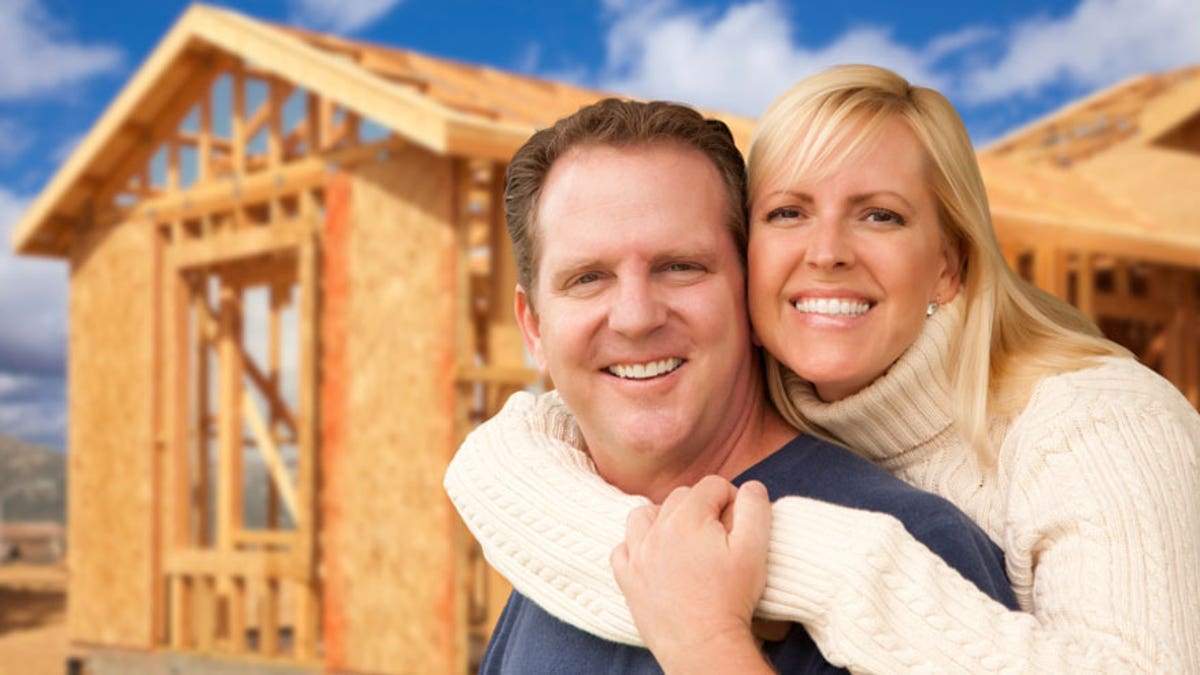
(iStock)
But buying a new construction home can have its advantages, but it also comes with a different set of considerations than a pre-owned house. Here are some tips and potential pitfalls to consider before you buy a brand new home.
Getting It Your Way
The biggest upside of buying a new home is that you can be directly involved in the planning process. If you’ve always dreamed of having a state-of-the-art kitchen or an open floor plan, you can work with an architect to plan out the home and have it built the way you want. You can also have your pick of preferred materials. Maybe you want a specific kind of tile in the bathroom, or a a certain shade of finish on the hardwood floors. Of course all these extra options can also mean a lot of extra work for you, such as researching building materials, double-checking the contractor’s work, and communicating changes to the architect. So before you go down the custom route, make sure you’re ready to take on the full-time job of designing and building a home.
Know What You’re Getting
For many buyers of new homes, the first look at their new place to live will be a tour of a model home. Unfortunately, many people discover only after they move in that there can be a big difference between the model home they toured and the house they actually bought. To help sell houses, the model home will often sport upgrades and features that do not come standard, such as granite counter tops and top-of-the-line appliances. While you take the tour, be sure to ask plenty of questions, so that you know exactly what you’re getting.
A bait-and-switch isn’t the only reason you might see some differences between model home and the real deal. Sometimes changes have to be made because building materials are out of stock and waiting for a new shipment can cause a serious delay. This might not be problem for minor things like door knobs or light fixtures, but replacing the claw-foot tub or french doors that you loved so much could be a deal-breaker. Before you buy a new home, make sure there is a process in place to deal with changes to materials.
Does It Come With A Warranty?
Second-hand homes come with few guarantees. While you may be covered if a previous owner lied about or tried to conceal a known-defeat, generally speaking, you’re on your own when you buy a used home. A new home, on the other hand, often comes with a warranty, which requires the builder to fix many problems. For the most part, warranties cover the materials and workmanship. For instance, if your new floorboards start to warp, or a hot water tank was installed incorrectly, the company would be responsible for the fixes. However, these warranties do not take the place of home owners insurance, so if you slam a window shut and cause it to crack, you’ll be on the hook for that. Of course, not all warranties are created equal. Coverage can range from a year to a full decade, and some companies may only offer guarantees on materials, while others may cover more serious structural problems like a shifting foundation. Before you finalize the agreement with the construction company, make sure you’ve read the warranty thoroughly and know what’s covered.
Get An Inspection
The home inspection is a crucial step in buying a used home. Before you make one of the biggest purchases of your life, you want to ensure that the roof isn’t about to collapse or the foundation isn’t cracked. However, even when a buying a new house, a home inspection is still a good idea. Rather than check for damage, an inspector in a new home should double check the quality of the work. Has it all been done up to code? Did the construction company skimp on materials, install appliances incorrectly or fail to properly grade the backyard to prevent flooding? When building a new home, mistakes can happen. But with an inspection, at least you’ll catch them early.